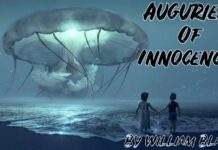Medievalism In John Keats Poetry
The Middle Ages have been supposed to be an immense storage facility of sentiment, and a portion of the sentimental people unreservedly drew upon this storage facility for their motivation. Separation loans charm the view, thus the inaccessible days of the medieval past made an unusual intrigue to the sentimental people. Pater says that the sentimental quality in writing is an expansion of weirdness to excellence, and this bizarreness, the sentimental artists Coleridge, Scott and Keats found in medieval life and medieval legends. Keats is one of those, who Traveled in the past in inclination to the present, and the two times of the inaccessible past, in which his creative mind wanted to abide, are the Middle Ages and the times of old Greece, with its excellent folklore.

What is Medievalism? Coleridge and Keats
Medievalism in writing signifies a recovery of the soul and environment of the Middle Ages. Among the sentimental people, Coleridge, Scott, and Keats managed medieval life, addressing those parts of it, which were sentimental. The most significant focuses of impact in the Middle Ages were the Church and the Castle. The sentimental people couldn’t have cared less about the religion of the Church, however, they felt pulled in by its beautiful angles. They subsequently do not mention the religion and confidence of the Middle Ages. They laid worry upon the sentiment of valor and love one on the hand, and, on the other, upon strange notions and legends with otherworldly foundation. Coleridge managed the súpernatural in his Ancient Mariner and Christabel; his “Proposal of the abnormal riddle of supernaturalism in these two sonnets is unparalleled in English verse. Keats broadcasted the vibe of supernaturalism in La Belle Dame Sans Merci. Medievalism with all its gear of sentiment and legend love and experience is generally noticeable in The Eve of St. Agnes.
“La Belle” and “Tribute to a Nightingale”
The setting of the sonnet, La Belle Dame Sans Merci is medieval. We have here additionally medieval extras: the knight at arms, the coldblooded strange woman, a faery’s youngster, the elfin got, the spell and charm, and general extraordinary climate. La Belle is one of Keats’ incredible accomplishments. It is medieval in its setting and air and has the straightforwardness of a medieval song. The Eve of St. Agnes, then again, is over-burden with unreasonable subtleties and is set apart by flawless, extravagant style. La Belle is in the straightforward style of an anthem and recounts an otherworldly story with a medieval air.
In the Ode to a Nightingale, while the creative mind of the artist revels in the ideal universe of the songbird, it hurls itself back, in an unexpected compass to the medieval past when additionally the songbird had sung its captivating melody: –
A similar that oft-times hath
Enchanted enchantment casements, opening on the froth
Of hazardous oceans and faery lands hopeless.
These three lines gather inside themselves the entire universe of medieval sentiment. None lived less in the present than Keats; in reality, the present was to him loaded with exhaustion, fever, and fret. His sentimental creative mind looked to escape from the present and discovered its paradise in the medieval world and in the realm of traditional folklore.
“The Eve of St. Agnes”
The Eve of St. Agnes is an account of adoration and experience in a medieval setting. It depends on the medieval legend of Saint Agnes. The legend was that if a servant were to do certain functions and head to sleep supperless on The Eve of St. Agnes (21st of January) she would have a brilliant vision and get delicate love from her sweetheart during the night. Madeline, wonderful. house cleaner, headed to sleep and fell “snoozing in lap of legends old”. Madeline and Porphyro, her sweetheart, had a place with two families in a destructive quarrel. Perphyro accessed Made Line’s chamber through the assistance of an old medical caretaker. He stirred Madeline by methods of music and stole away with her, while the detainees of the manor were sleeping soundly after their wild blowout.
The Eve of St. Agnes is a wonderful record of the attachment to Keats for all that is perceived by the expression, medieval adornments. Here the artist tosses his creative mind back to the medieval past and gives a medieval setting to a romantic tale, which is brimming with brave and experience. There are largely the medieval frill’- – the brave knight, the delightful love-lorn woman, having confidence in the medieval legend of St. Agnes, the beadsman saying supplications for heathens, the medieval mansion, and the ‘argent’ valor. As we read the sonnet, we appear to be borne away to a place where there is charm a sentimental world, loaded with affection and experience.
In The Eve of St. Agnes, the inquisitive excellence of the words, their characteristic choice, their out-of-the-world note, and their sweet, changeful and elfin music, are in the nearest agreement with the sentimental and wild landscape, with Porphyritic riding over the field with his heart ablaze, with Madeline “sleeping in lap of legends old.”
John Keats Style And Diction In Poetry


























